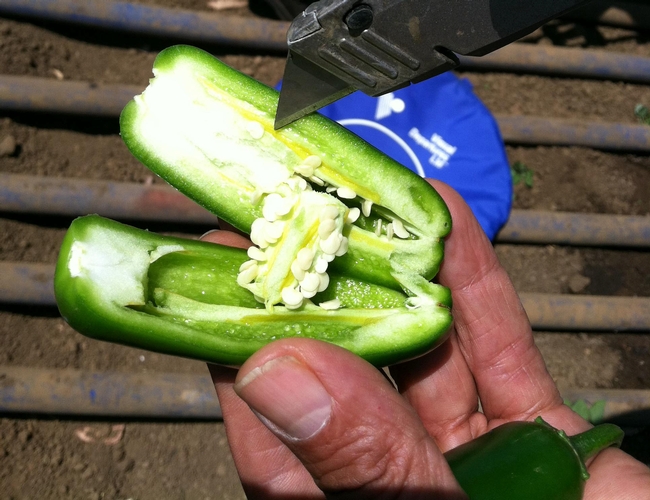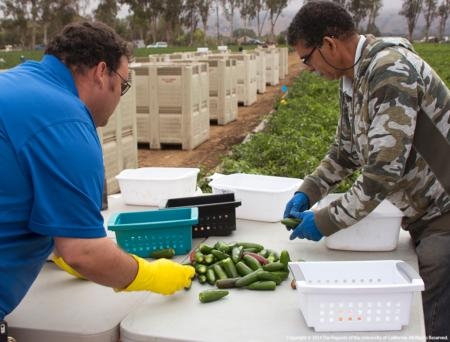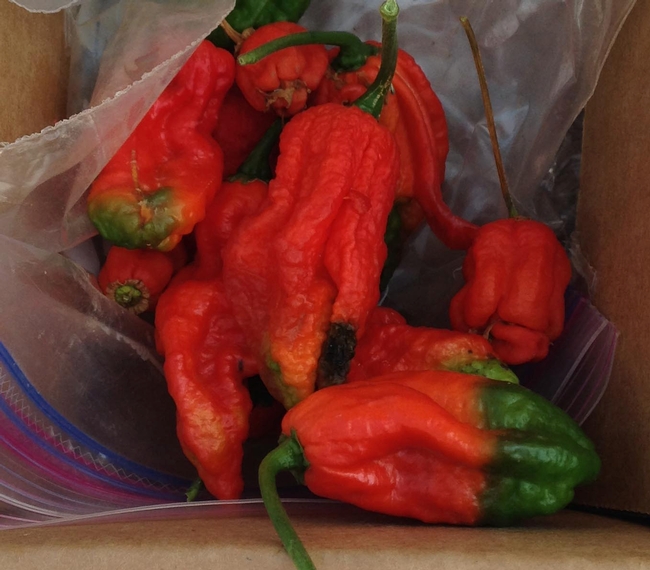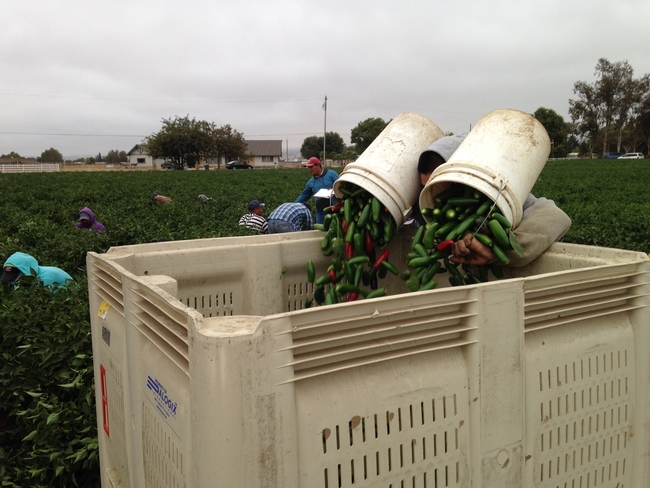
“Some people think the seeds make it hot, but capsaicin is what makes chile peppers hot,” said Baameur, who works with vegetable growers in Santa Clara and San Benito counties.
Baameur is trying to grow a hotter jalapeño by studying the variables that raise the Scoville units, which measure a pepper's heat. For the past four years, he has been documenting the effects of different rates of water, potassium, sea salt and nitrogen applied to the jalapeño crop at George Chiala Farms in Morgan Hill.
“We're trying to find a way to raise the capsaicin level of the jalapeño and raise the Scoville units, which will then allow us to have spicier peppers,” said Jeff Sanders, raw product coordinator for George Chiala Farms.

The relatively cooler climate of the Santa Clara County area may be the reason the pepper plants produce different results. “I think it's more a relation to heat, ambient temperature, much more than just water,” Baameur said. “Cool years and hot years will result in different heat units for the same jalapeño variety.”
The amount of potassium hasn't made a difference, but adjusting nitrogen fertilizer seems promising.
“High nitrogen is promising because it produces a hotter pepper and also allows for high crop yields,” Baameur said. “Low nitrogen also resulted in higher pungency, it brings a lot of heat in the peppers,” he said. “However it is correlated with lower yields.”

“The trend lately is toward hotter items,” said Sanders, noting a growing popularity of foods containing habanero and even the Bhut jolokia, or ghost pepper. “Both of those are significantly hotter than jalapeños, but the jalapeno is still sort of the standard bearer for a hot pepper,” Sanders said. “Those are the items people consistently want. A jalapeño chip still has more name recognition than a habanero chip. And the hotter you get the pepper, the easier it is to adjust your end product.”

“When you're talking about a small amount of that pepper in your product, just a slight citrus flavor can overpower the heat very easily,” said Sanders. “So it's more important that we reach high heat levels with the flavors that our customers are requiring.”
Consistency of pungency in the peppers is also one of the pepper grower's goals.
“We're trying to get a consistent heat level so that our jalapeños going to the processing plant always reach the same Scoville unit score,” Sanders said. “This makes our end product more consistent, which makes our customers happy because then the product they receive to go into their items is more consistent.”
